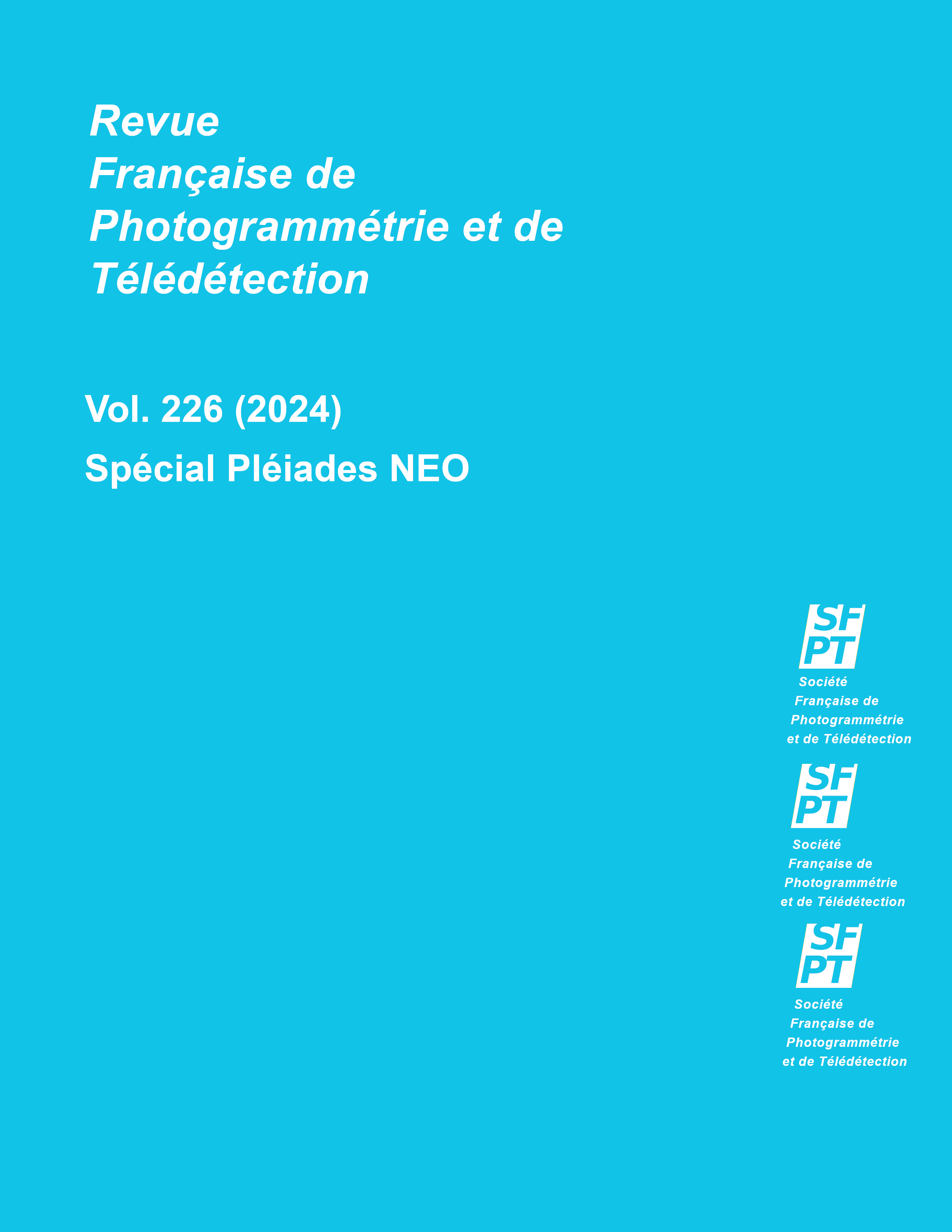Modélisation de la bathymétrie par Pléiades Neo en baie de Saint-Malo: transfert radiatif et réseaux de neurones
DOI:
https://doi.org/10.52638/rfpt.2024.683Keywords:
bathymétrie, transfert radiatif, réseaux de neurones, bleu profond, bord rouge, Saint-MaloAbstract
Despite the growing interest in mapping the seabed, only a quarter of them has been able to be reliably surveyed at a resolution of the order of one km (30 arc-seconds). This is explained by the heavy costs generated by campaigns by boat (sonar) and/or by plane (lidar). Thus, satellite-derived bathymetry has leveraged considerable growth over the past two decades. As a spearhead, the very high spatial resolution multispectral imagery of Pléiades Neo has 6 bands (4 visible, 1 red edge, 1 infrared) with a spatial resolution of 1,2 m, thus surpassing multispectral imagery of Pléiades-1 provided with 4 bands (3 visible and 1 infrared) at 2 m. Based on a Pléiades Neo 4 dataset acquired above the moderately turbid waters of the Bay of Saint-Malo, this work enabled to quantify the contributions of the deep blue and red edge bands to the prediction of lidar bathymetry with regard to the nature of the modeling, and the architecture of the neural network. First, semi-analytical modeling (radiative transfer) based on ratio transforms, tested individually and linearly: replacing the blue band with the deep blue band decreased the standard linear regression (blue-green-red-infrared, R2 =0,36) of 11,1%, but replacing the red band with red edge produced the same score. Secondly, semi-analytical modeling based on the Pléiades-1 ratio transform versus the combination of the 15 Pléiades Neo transforms: respective increases of 52.8% in linear regression (R2Pléiades-1=0,36, and R2Pléiades Neo=0,55), and 36,2% of the non-linear regression by neural network with two hidden layers provided with three neurons (R2Pléiades-1=0,58, and R2Pléiades Neo=0,79). Finally, empirical modeling based on the spectral enhancement of the simulation of Pléiades-1 by deep blue and red edge generated a maximum gain of 6% for linear regression (R2Pléiades-1=0,50, and R2Pléiades Neo=0,53) and 1,4% for non-linear regression by neural network with two hidden layers provided with three neurons (R2Pléiades-1=0,73, and R2Pléiades Neo=0,74).
Downloads
Downloads
Published
How to Cite
Issue
Section
Categories
License
Copyright (c) 2024 Antoine Collin, Dorothée James, Coralie Monpert, Sophie Loyer, Pirta Palola, Lisa Wedding, Eric Feunteun

This work is licensed under a Creative Commons Attribution 4.0 International License.






